The GoPro Hero5 Session is a top end action camera offered in a tiny package with seriously good video quality and image stabilisation. Review: Kris Hodgson
We record review videos of all of our tests for our YouTube Channel and the site, so when we were given the opportunity by GoPro Australia to use the Hero5 Session we were pretty excited. Part of the appeal is the number of accessories available for the GoPro range. Going away for a weekend I took the opportunity to get acquainted with the device.
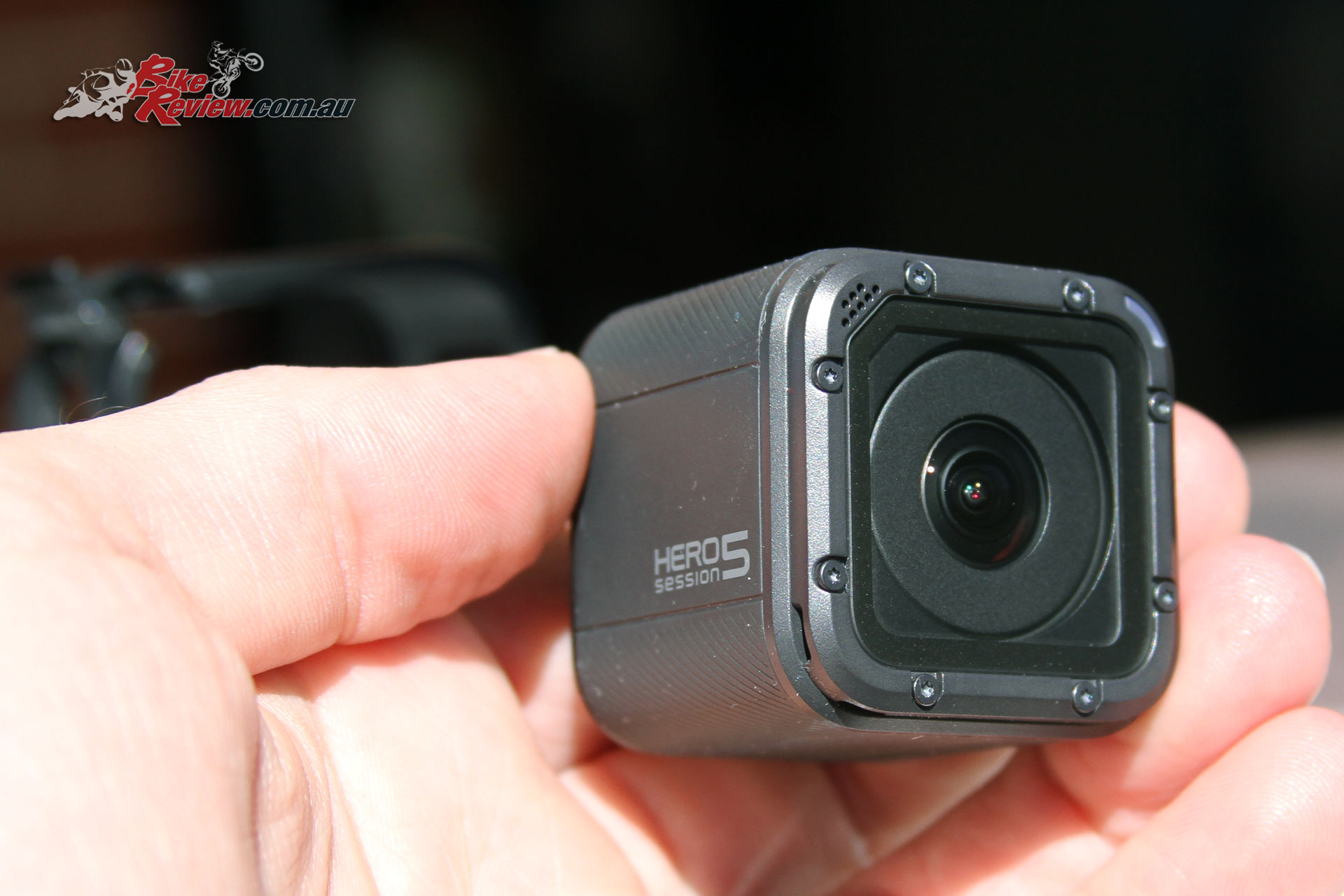
GoPro’s top-end small form factor sports offering, the Hero5 Session. Pictured without the supplied cradle.
First up the Hero5 Session is a smaller form factor version, and comes in a cradle which is what allows it to be connected to range of mounts, and no doubt provides a bit of protection from the right angles. It’s waterproof without a case and features two buttons, with a side access panel for the charging port (USB-C) and the microSD slot.
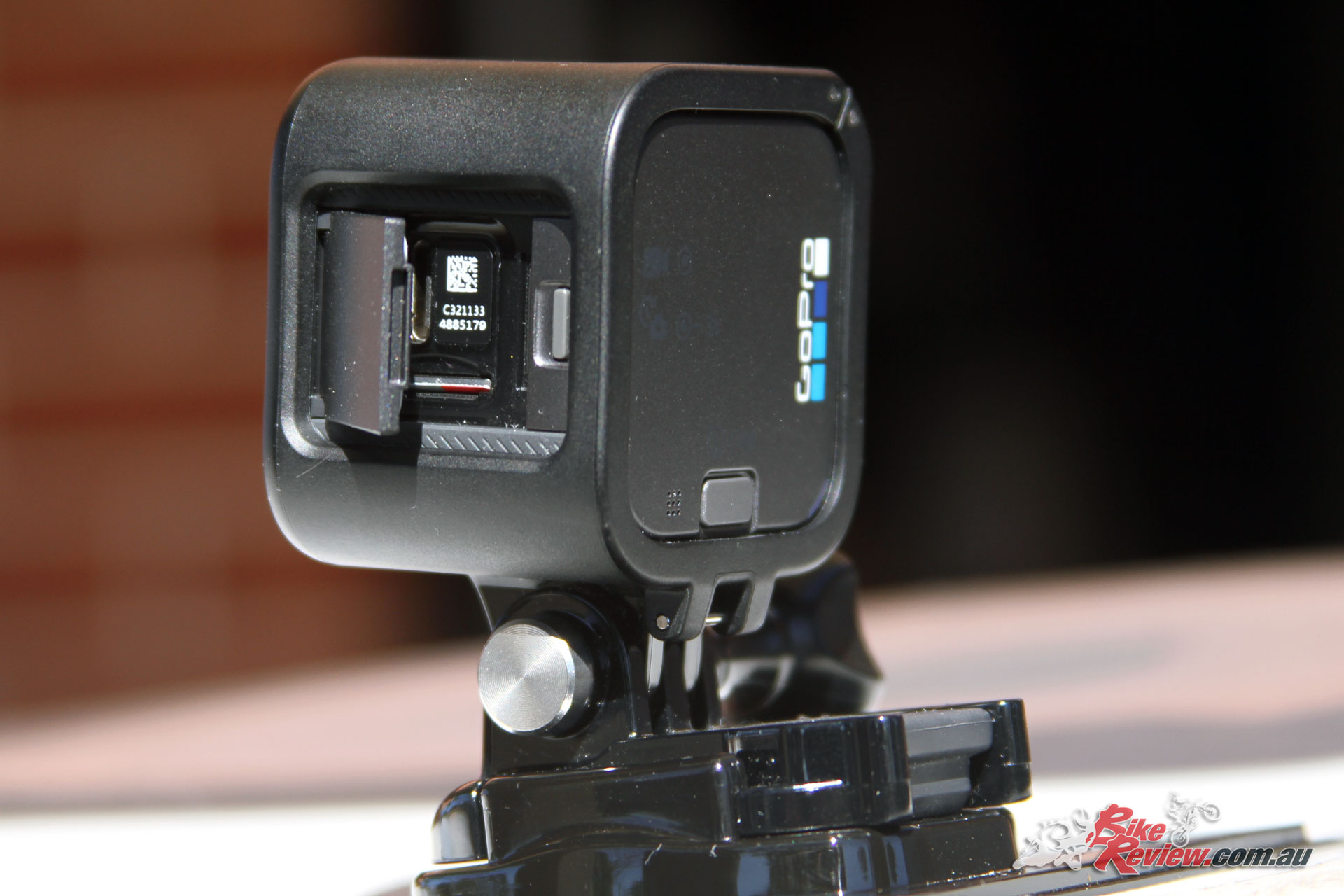
A side access panel allows charging and MicroSD card access. The Hero5 Session is waterproof with the panel closed to 10m.
It’s also shown as a pretty significant step up from the standard Session, with more advanced image stabilisation, as well as the ability to record in 4K and operate the camera with voice commands.
We also got sent a microphone adapter that can be fitted via the charging port, which is ideal for pieces to camera for better audio, but with the access panel open it is obviously not waterproof when in use. Plus a chest mount harness system, ‘bar mounts and additional flat and curved mounts.
There’s a forward facing microphone built in as well, which seems ideal for normal use, although when it comes to moving at speed on a motorcycle, standard microphones are normally overwhelmed by the buffeting.
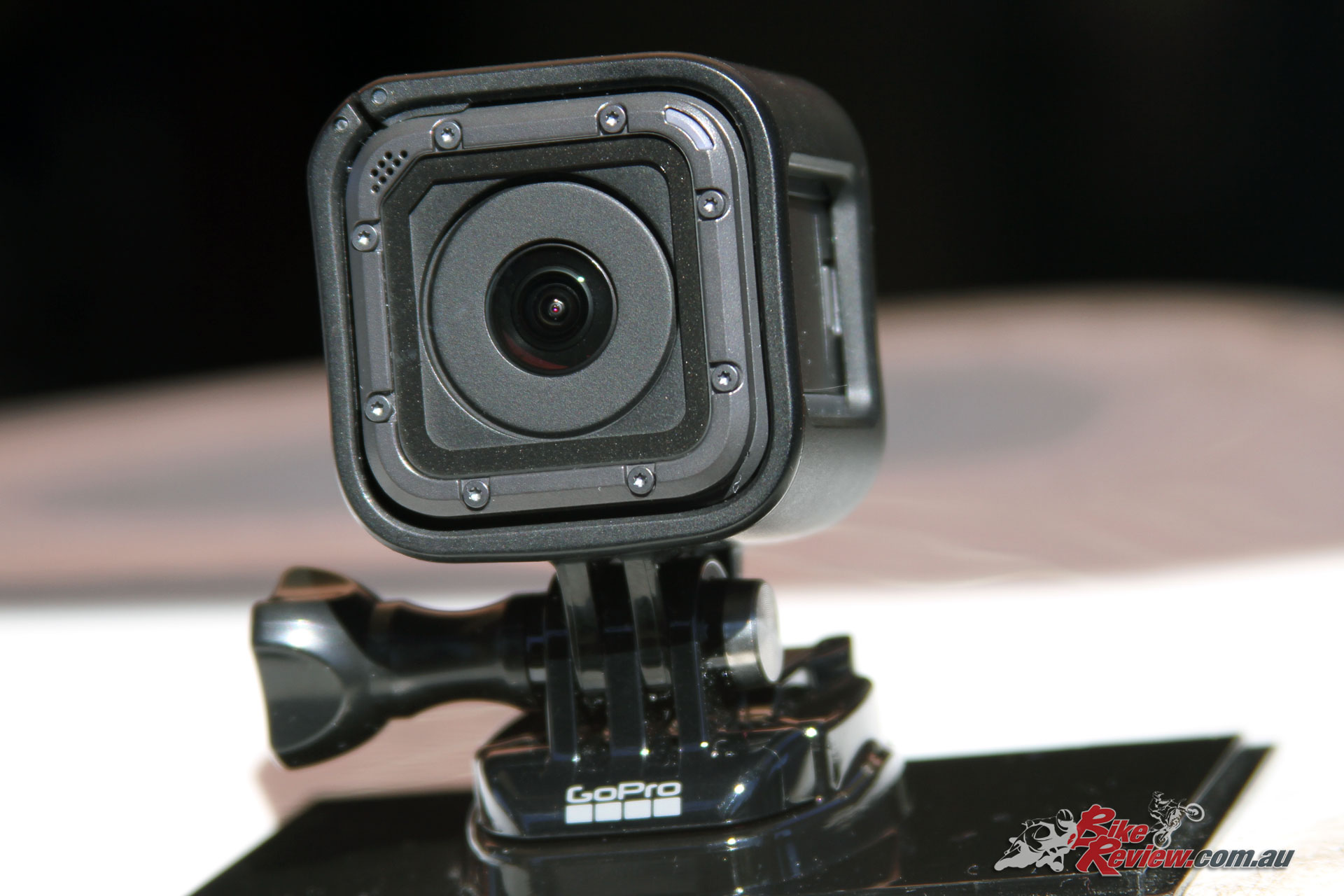
The incorporated front microphone would probably be more ideal for non motorsports, as wind buffeting is always an issue on a motorcycle
You can toggle through the options on the camera with the two buttons, while it’ll sync with your mobile via the GoPro App for some extra functionality, like being able to preview the camera’s point of view, ensuring if you’re setting the camera up, you’ll get the field of view you’re after. Or to remotely start recording.
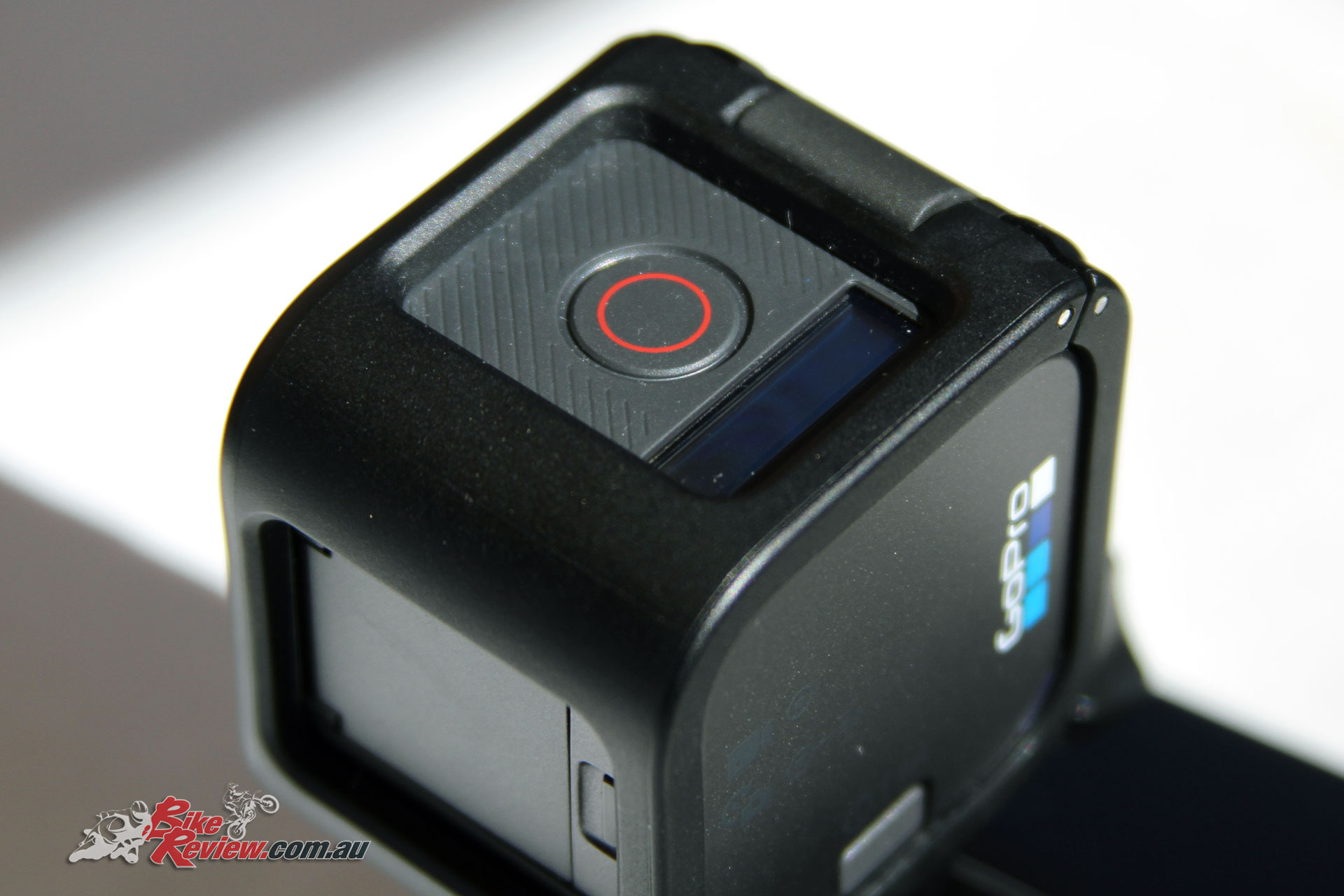
The top button starts recording with one easy press. We’ve also got a remote control with a larger button that could be added to a belt or backpack, ensuring even wearing heavy gloves you can operate the Session 5.
We’ve also got some QuikStories keys, which we’ll be testing in the future.
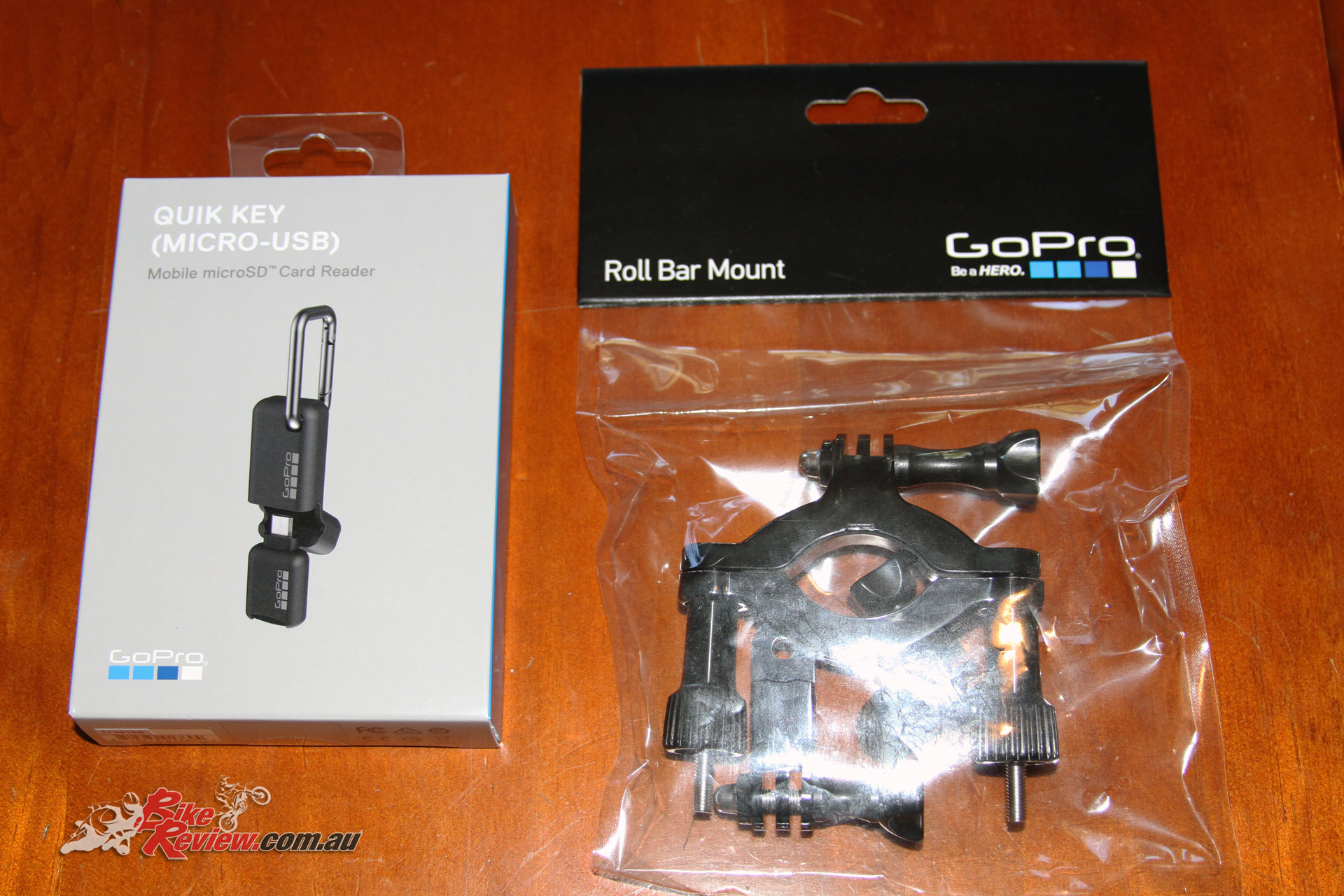
The QuikStories Key (left) allows for easy on the run movie generation. ‘Bar mounts offer additional flexibility, depending on the bike model.
On the bike the biggest concern is always ease of use, especially if you’re running a camera attached to your helmet. It needs to be easy to turn on and off, as well as easy to tell when you’ve done that.
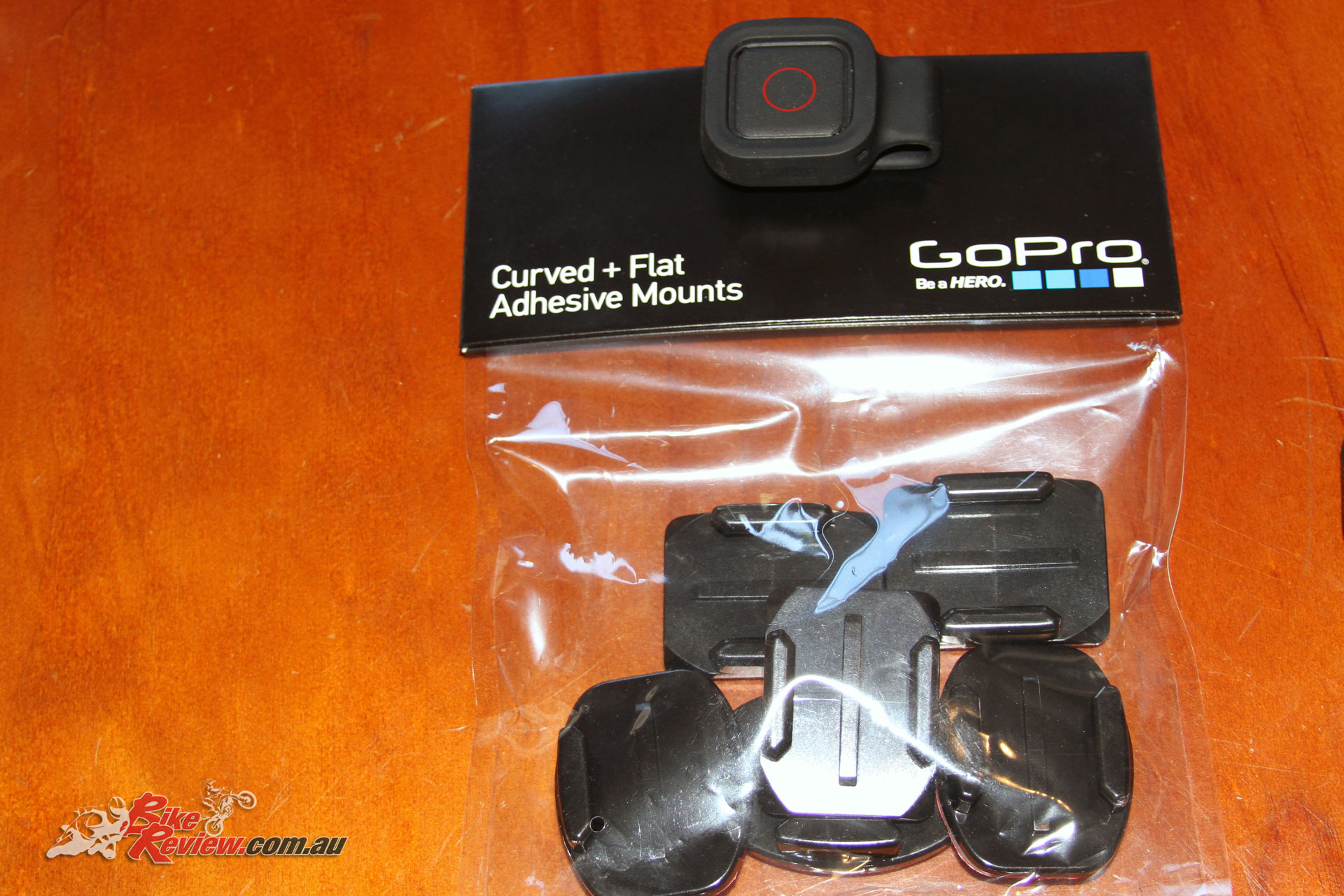
Adhesive mounts come in a flat and curved type, so you’ll be able to stick the GoPro pretty much anywhere. Remote record button accessory up the top.
Attachment and portability is like-wise important, as the camera needs to be as small as possible to help reduce the amount of additional stress and wind resistance it causes on your helmet, or alternatively be easily mounted, like to the ‘bars, on a flat surface with a more permanent attachment (similar to those used for helmets) or via the chest mount system.
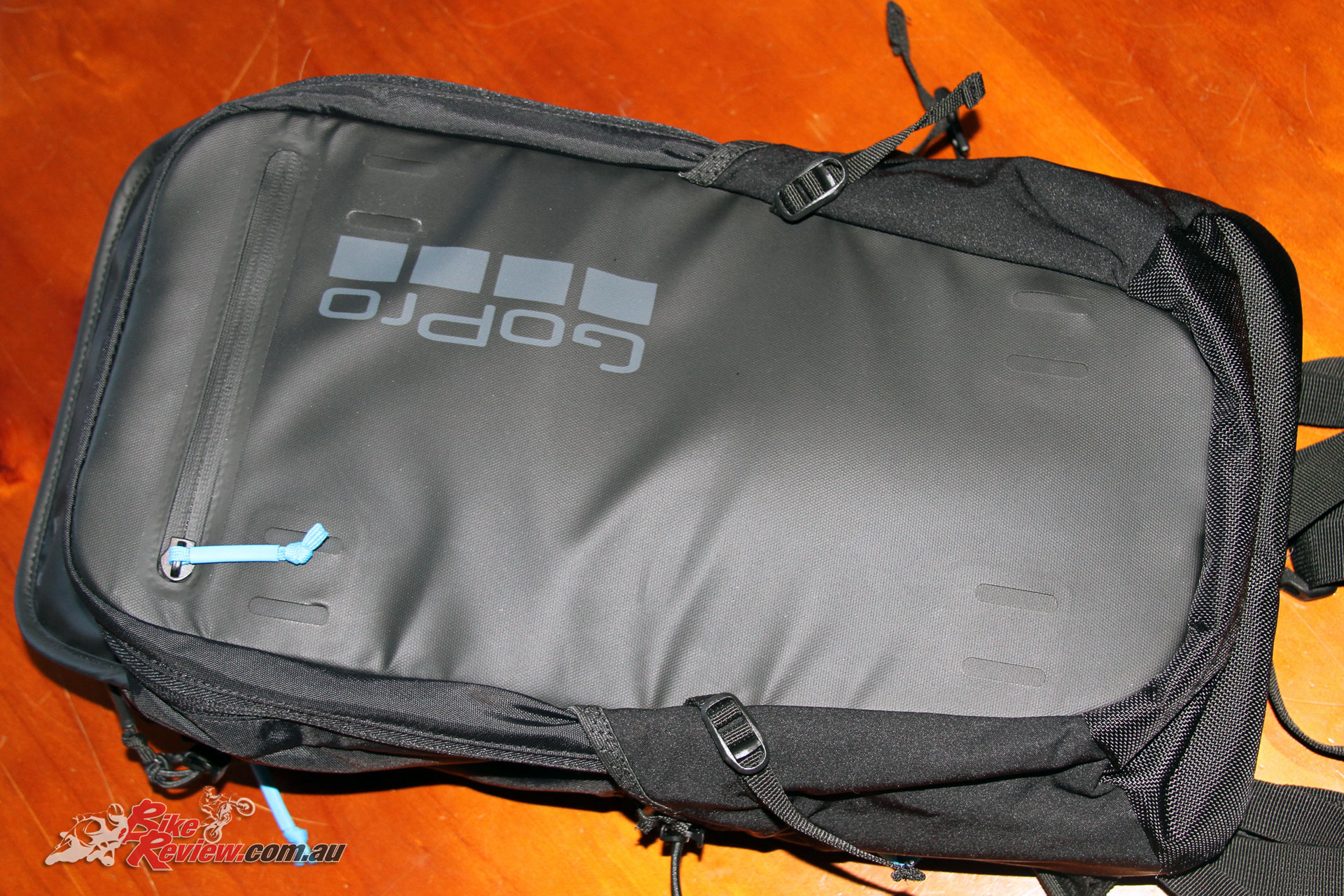
A seriously cool GoPro bag also offers heaps of features, from a standard GoPro mount on one of the straps, to an easy access top pocket and rear pocket for a small laptop.
The Hero5 Session delivers on all counts, and only requires the tiniest of storage space when not actively attached. It’s easy to handle as well, and the record button is easy to toggle, although with heavy enough gloves this might be a little more difficult on the move. Hence that remote control button accessory.
Taking short clips offered great quality footage, although I was mainly holding the camera by hand for my testing, and I can definitely see the advantages of one of their genuine handheld solutions if you intended to carry the camera around recording extensively.
Now the removable MicroSD storage does allow for the use of additional cards, in case you’re running out of space, although it’ll accept up to 64gb cards, which should keep you sorted, while battery life seems to sit around the two hour mark worth of recording.

The Hero5 Session is tiny and the cradle doesn’t add all that much bulk. It’s easily pulled out or re-orientated in the cradle too.
The limitation could be the battery life however, although you can always plug in a battery pack and charge the Session in your bag, or plug in the charging pack and record while recharging if you’re desperate.
I’ll be fitting an attachment to my helmet for the GoPro soon, and if you’re considering doing this yourself you can also consider the low profile frame/swivel mount. Important things to remember are getting the mount angle right as the standard mount only offers one axis of adjustability, although you can also turn the camera 90 degrees in the standard frame.
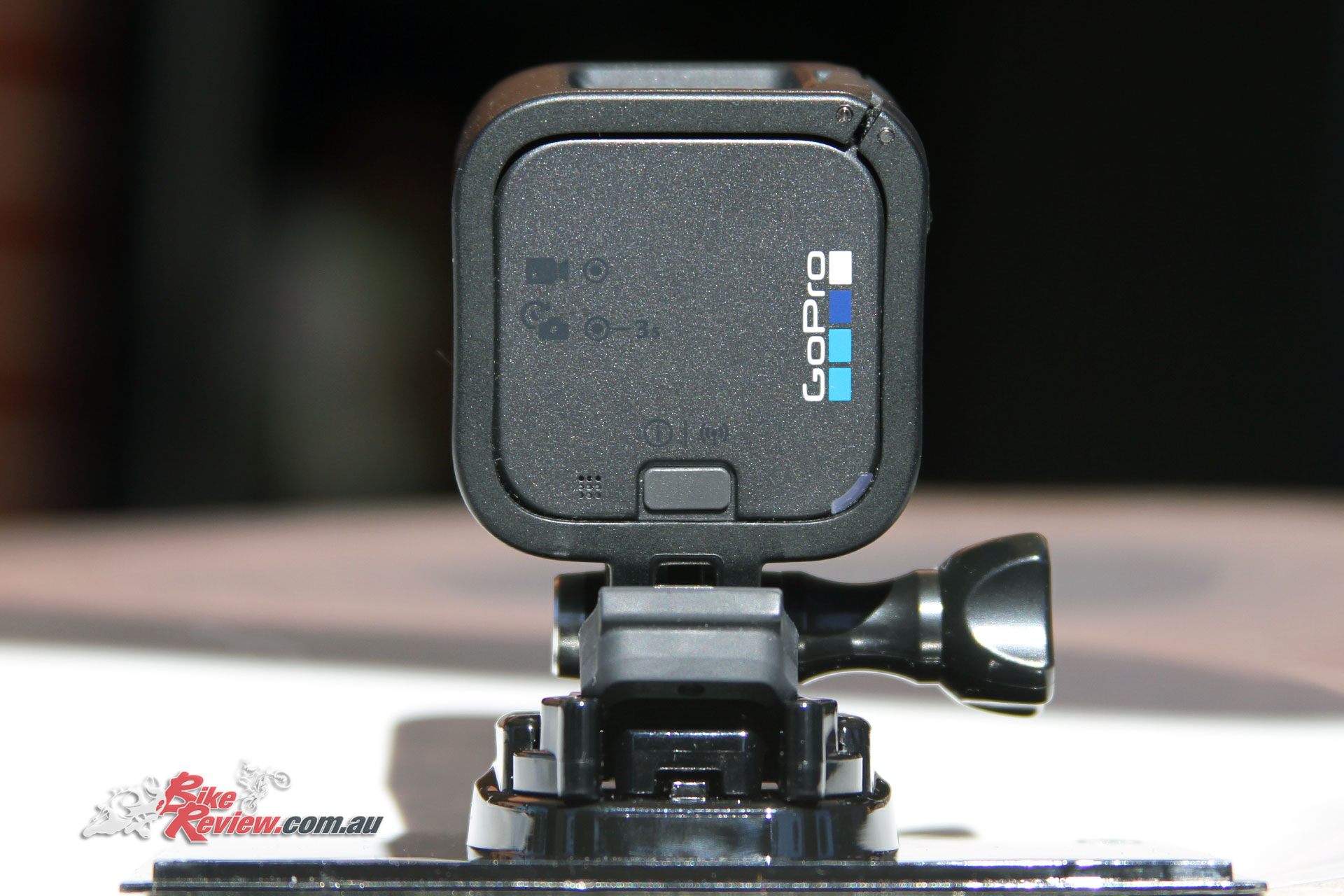
The rear button can be used to toggle through settings on the small digital display. Super easy to use and understand. No rocket science degree required to figure it out.
Stay tuned for our full review with footage, coming soon.


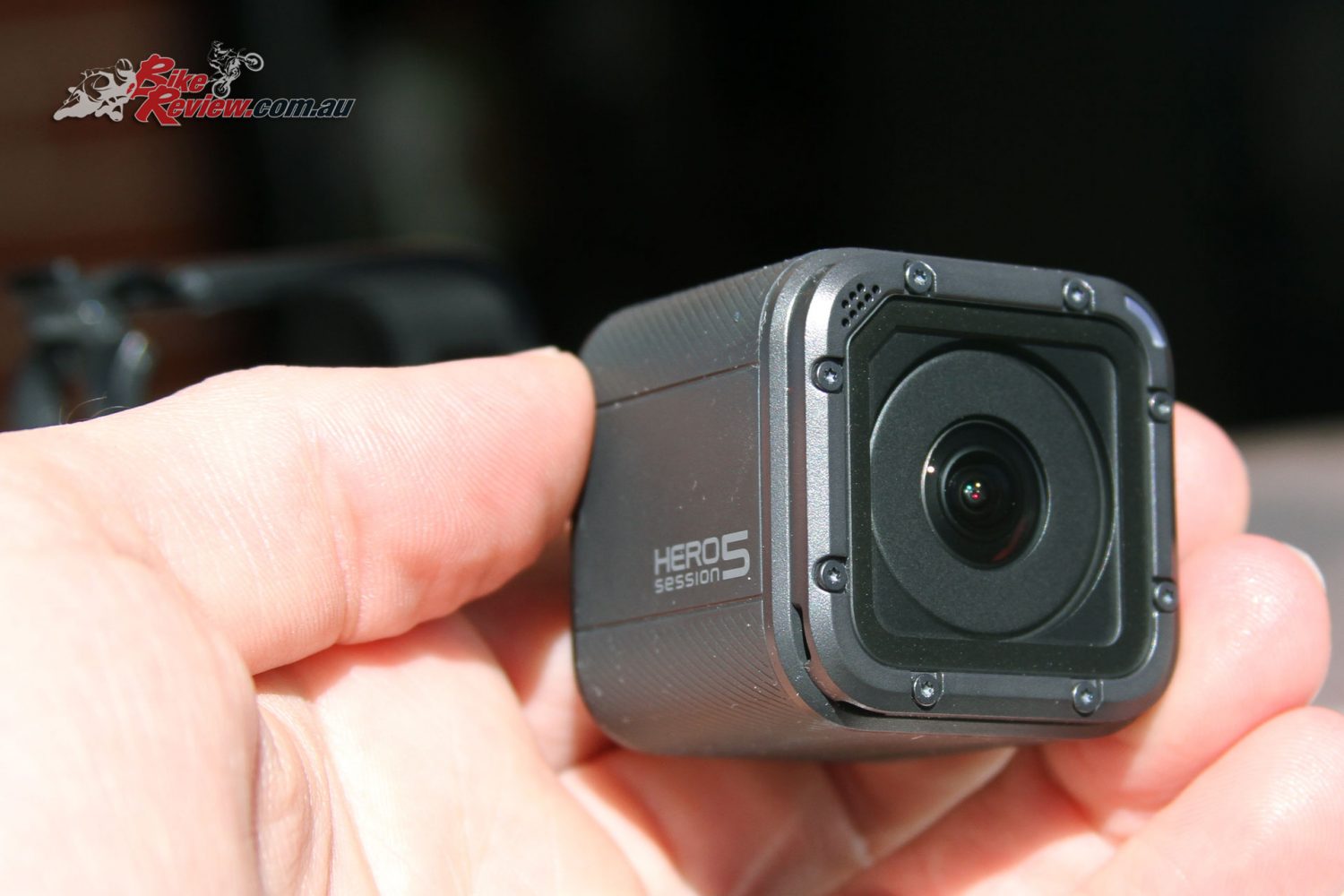
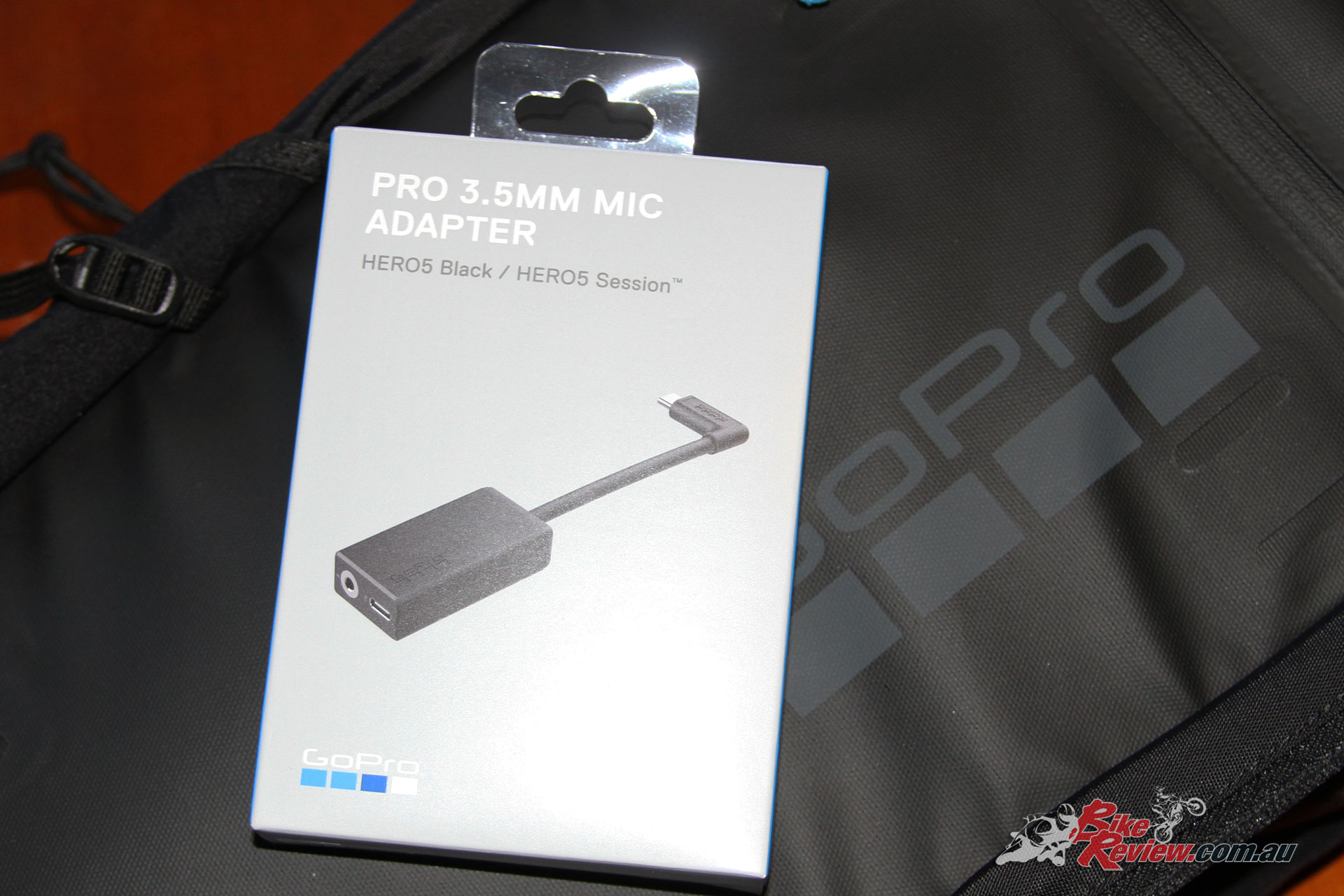
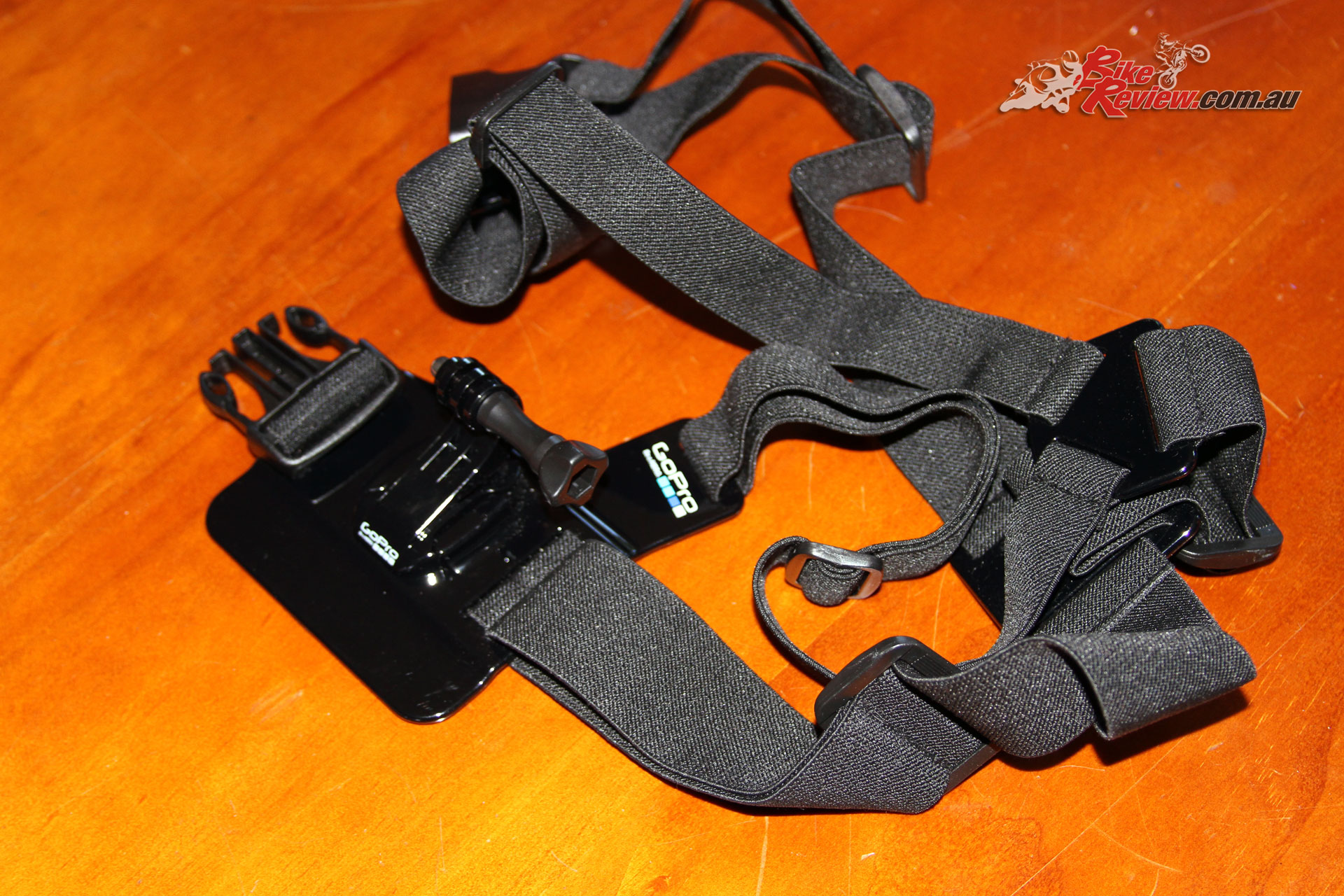

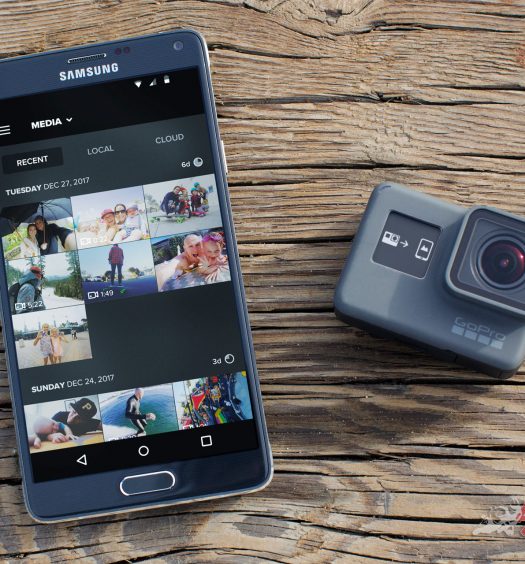
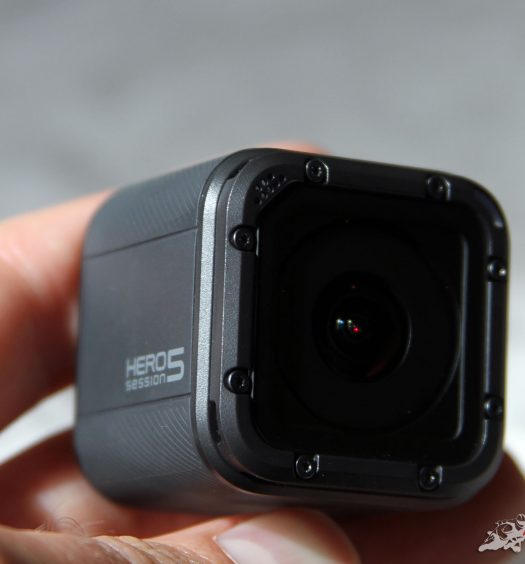
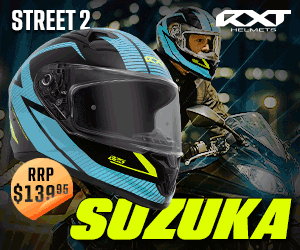





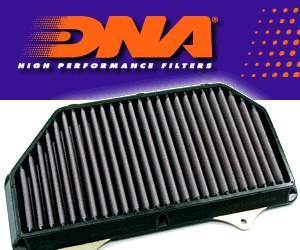







August 23, 2017
Thanks Kris, interested in seeing a full-blown review as most others come up pretty short.
Can you tell us how well it mounts onto the bike using the 3M double-sided adhesive pads, and whether it can stay on under heavy conditions. I’m interested in using the GoPro to record like a dashcam – just to be safe – so having front and rear mounted GoPros. Is the 2 hour and 64GB card a deal breaker?
August 24, 2017
Hey Julian, we’ll have a proper full review shortly and I’ll make sure to cover those areas. The 3M adhesive tends to be pretty rock solid in our previous experience, but it normally comes down to surface preparation, and it can be finicky at times. If it’s not quite right, like a leading edge hasn’t sealed down properly and been left to cure, or there was a little grease, or dust preventing a good seal, it can slowly deteriorate, especially with constant pressure from the wind at speed, plus vibrations. We’ll do some extensive testing though on the GoPro offerings to make sure it matches previous experience.
I’ve used another brand action camera in a similar fashion, and with about 90-120 mins of recording time it normally handled two trips well, and it’s just a matter of clearing the card and recharging overnight. If you’ve got the capability at work you can also always charge your GoPro via a USB port, and clear the card with a card reader if needed.
That’s not a deal breaker to me, and you can also lower the video quality, as the lowest setting will provide the greatest battery life and recording time, but should be ideal for recording other people’s shenanigans on the roads if you ever need any evidence. We haven’t put this to the full test yet, as we’re normally recording in 1080p, but we’ll see how long we can get at minimum quality.